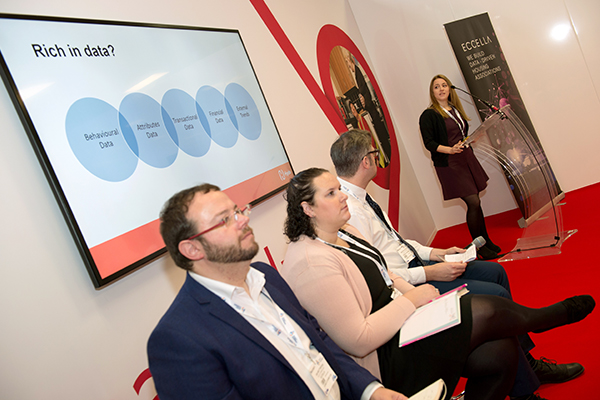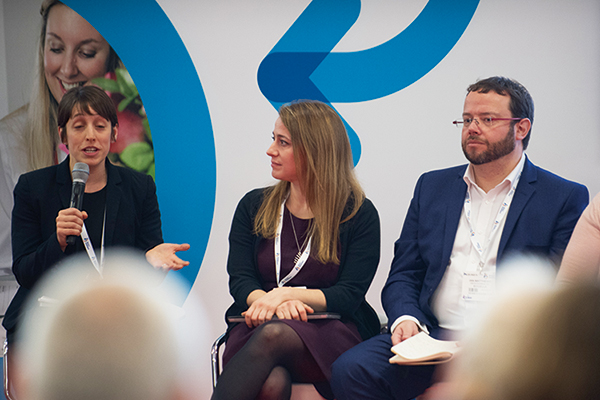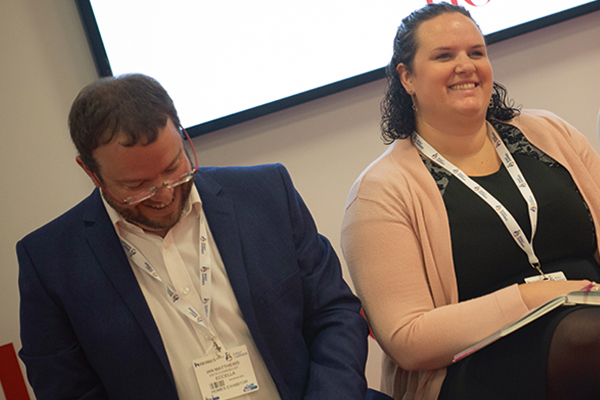Doing more with data
Social landlords have largely been seen as behind the times when it comes to using their data. Inside Housing and NGDATA find out how the sector can improve. Photography by Sira Studio
In association with:

The big data revolution is well and truly upon us. But housing has been described as behind the curve, said to be data rich but knowledge poor. To explore how social landlords can better harness data, experts gathered at Homes 2017 for a breakfast briefing hosted by Inside Housing in partnership with data management and analytics consultancy NGDATA.
Beyond spreadsheets
Laura Carmody, head of insight and product development at HACT, tells the briefing attendees that housing providers are sitting on a gold mine of data. “Housing associations have a ridiculous amount of data and are not doing much with it,” she says.
Even so, Charlotte Clayson, senior associate in the litigation team at solicitors Trowers & Hamlins, argues that the housing sector is not a total laggard when it comes to data. “I don’t think housing is necessarily behind: different technologies work for different organisations in different ways. It’s about using the technology available that suits your organisation, and the resources you have, to best maximise the use of your data.”
Ian Matthews, data evangelist at NGDATA, argues that one problem is often how social landlords store the data. Too often, he says, information is logged on “Excel or, worse, paper”.
“A huge amount of data is being captured and generated: the challenge is that data is sitting within very specific systems for very specific purposes. Siloed systems are at the heart of the challenge.”
The key is to get information “into one central location”, he says. “Let’s kill Excel and get the information into the hands of the people that need it.”
As an example of where this approach has been applied, he points to how Genesis has built up an information hub from which data can be pushed out to different applications.
First of all, though, associations have to work out what to do with their warehouses of old documents. Ms Clayson says that some documents, such as constitutional items, should not be destroyed. Much else can be scanned though, she adds.
The event hears that asset management is an obvious area in which analytics could valuably be applied.
Ms Carmody says data analytics could be used to establish the lifespan of boilers, which could in turn be factored into associations’ cyclical work programmes.
Mr Matthews agrees: “Access to good insight can lead to a shift from being reactive to proactive: scheduling services not when something is broken, but understanding the older assets that are most likely to have issues and fixing them before they happen.”
He says this proactive approach could “dramatically improve” tenants’ experiences of their landlords.
More broadly, placing good quality data into the hands of officers on the ground could enhance organisational efficiency, Mr Matthews suggests. “It could be transformational if we can make housing officers 5% more efficient by pushing the right data to the phone or computer where they need it.”
However, he says one of the biggest challenges for many associations is understanding the data that is available.
“Housing associations have a ridiculous amount of data and are not doing much with it.”
Laura Carmody, head of insight and product development, HACT
Comparing, analysing and understanding the information collected by a number of associations is the aim of a data standardisation project currently being carried out by HACT, to which 17 housing associations have signed up. After taking the data and cleaning it up, HACT seeks to identify patterns, which could then be used for predictive analytics.
The project has turned out to be more complicated in practice than in theory, Ms Carmody says, “because the information coming from different systems means different things”.
“We weren’t certain we were looking at the same things.”
But the project is already starting to bear fruit, she reports, pointing to how data has been pulled together from six associations to assess the impact of getting people into full-time employment.
Mr Matthews cautions against the dangers of being over-ambitious when embarking on a data project. “One of the secrets in big data is that you don’t start big, you start small.”
The danger for organisations is being overwhelmed by the scale and complexity of the task, he suggests.
“Data lakes turn into data swamps very quickly if you don’t plan what you are doing. If you start small and think practically, and start with a data puddle and turn it into a lake later, it works really effectively.”
No need to panic
Kate Krokou, head of research and strategy at Hyde, explains that the landlord has decided against collecting income and employment data for all of its tenants.
“If HMRC can’t get it right for tax credits, what hope have we got?” she asks. “We start with what is already available and is easily accessible. We only start collecting information if you are really sure you understand it, you have a good way of storing it and that it’s worthwhile information you are collecting,” she says.
Sometimes it makes more sense to buy off-the-shelf data rather than collecting it yourself, Ms Krokou argues.
She says Hyde encountered “a lot of resistance” when it carried out individual telephone surveys due to concerns about selling. Hyde has reassured tenants by ensuring tight data protection rules are in place.
This issue has fresh urgency thanks to the European General Data Protection Regulation, which is due to be implemented in May next year – with some concern about how well prepared the sector is.
Ms Clayson of Trowers & Hamlins says: “I don’t think anybody in any sector will be confident saying they are 100% compliant by May next year.” But she says there is no need to panic if existing practice is strong.
She reports that there is overlap between the existing Data Protection Act and the new legislation. “If you know what you are doing as the law stands at the moment, you are in a really good place.”
When it comes to where use of data might go next, Mr Matthews points to machine learning. This enables computers to learn without being explicitly programmed.
But he advises associations to be cautious about embracing this evolving technology, pointing to the risk of a machine making a mistake that could have been spotted by a human. “Ninety per cent accuracy with something that impacts on people’s lives is not acceptable.”











